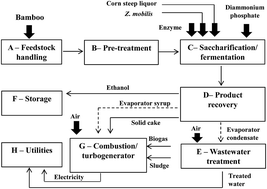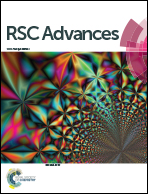An economic and environmental evaluation for bamboo-derived bioethanol
Abstract
The potential to obtain bioethanol from bamboo using three different pretreatment technologies (liquid hot water (LHW), dilute acid (DA) and soaking in aqueous ammonia (SAA)) is assessed via techno-economic and environmental analyses. The minimum ethanol selling price (MESP) is used to compare the economic potential of the pretreatment processes, and these are 0.554, 0.484 and 1.014 $ per litre for DA, LHW and SAA pretreatments, respectively. The bioethanol pump price under current and future policy scenarios in China is compared with petrol and reveals that bioethanol produced via DA and LHW pretreatments could be economically competitive even without government support. From an environmental perspective, a life cycle assessment approach is used to evaluate bamboo-derived bioethanol for full environmental impact categories, and this is compared with petrol on a ‘well-to-wheel’ basis. It was found that all three bioethanol pathways would be environmentally better than petrol with greenhouse gas (GHG) emissions reduced by 45–93%. A comparison of bamboo-based bioethanol with other cellulosic feedstocks not only suggests that bamboo could be a viable and competitive feedstock for bioethanol production, but also demonstrates that amongst the pretreatment technologies tested, LHW has the most potential for achieving favourable economic and environmental outcomes.


 Please wait while we load your content...
Please wait while we load your content...